Community-level foliar stable carbon isotope is dominantly influenced by leaf functional traits in dry Inner Mongolia steppes
Published in Earth & Environment

Research Background
Plant leaf stable carbon isotope (δ13C) is a key indicator of water-use efficiency, providing critical insights into vegetation dynamics under climate change. However, the drivers of community-level leaf δ13C variation in arid and semi-arid grassland ecosystems remain unclear.
Methods
This study investigated meadow steppe, typical steppe, and desert steppe ecosystems along a decreasing moisture gradient in Inner Mongolia. Using data from 399 sites and 1,197 community plots, we calculated community-weighted
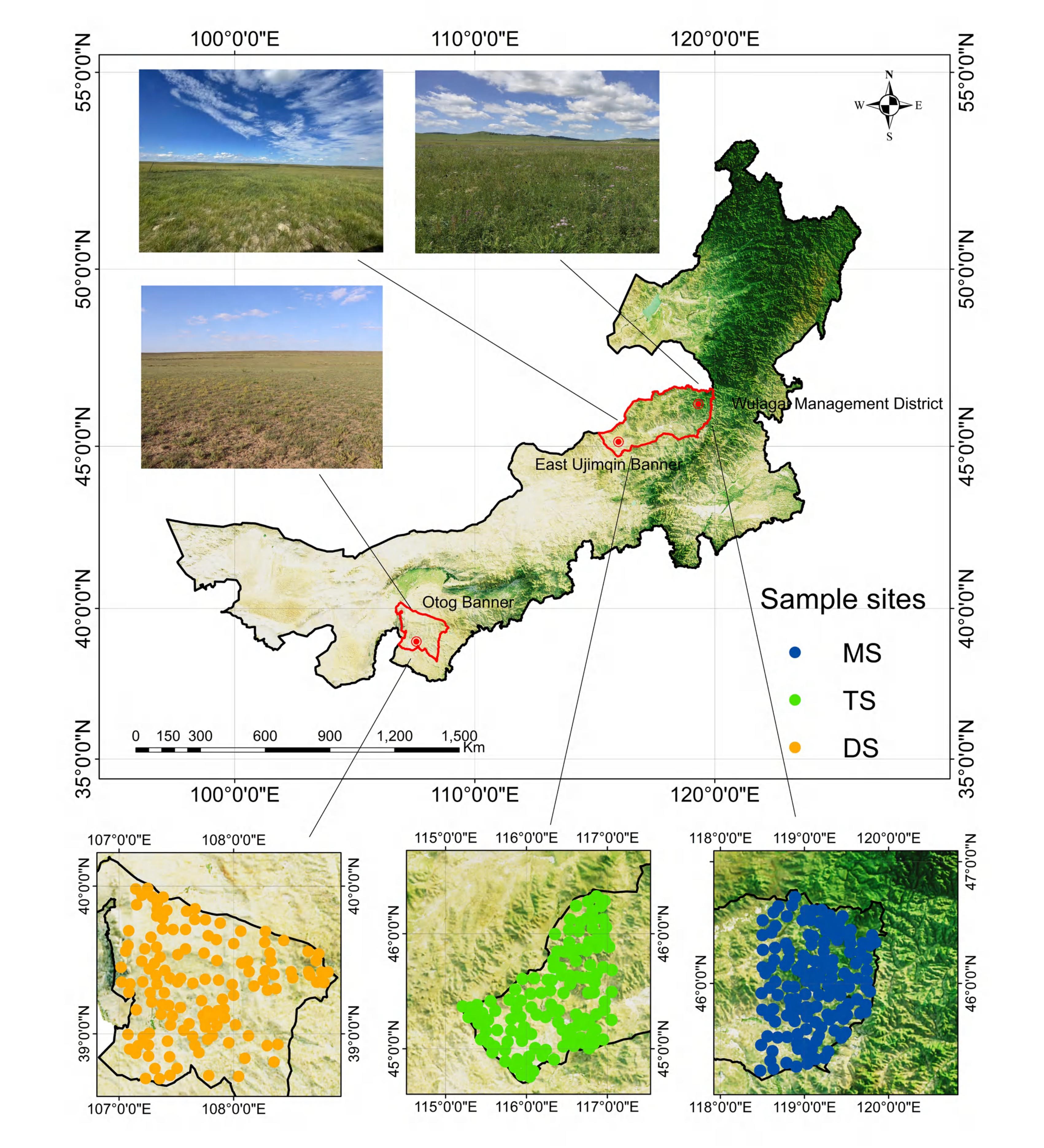 mean leaf δ13C (δ13CCWM) and leaf functional traits (LFTCWM) for 70 dominant species, along with climatic and edaphic factors. We assessed the responses of δ13CCWM to leaf traits, environmental factors, and aboveground biomass (AGB).
mean leaf δ13C (δ13CCWM) and leaf functional traits (LFTCWM) for 70 dominant species, along with climatic and edaphic factors. We assessed the responses of δ13CCWM to leaf traits, environmental factors, and aboveground biomass (AGB).
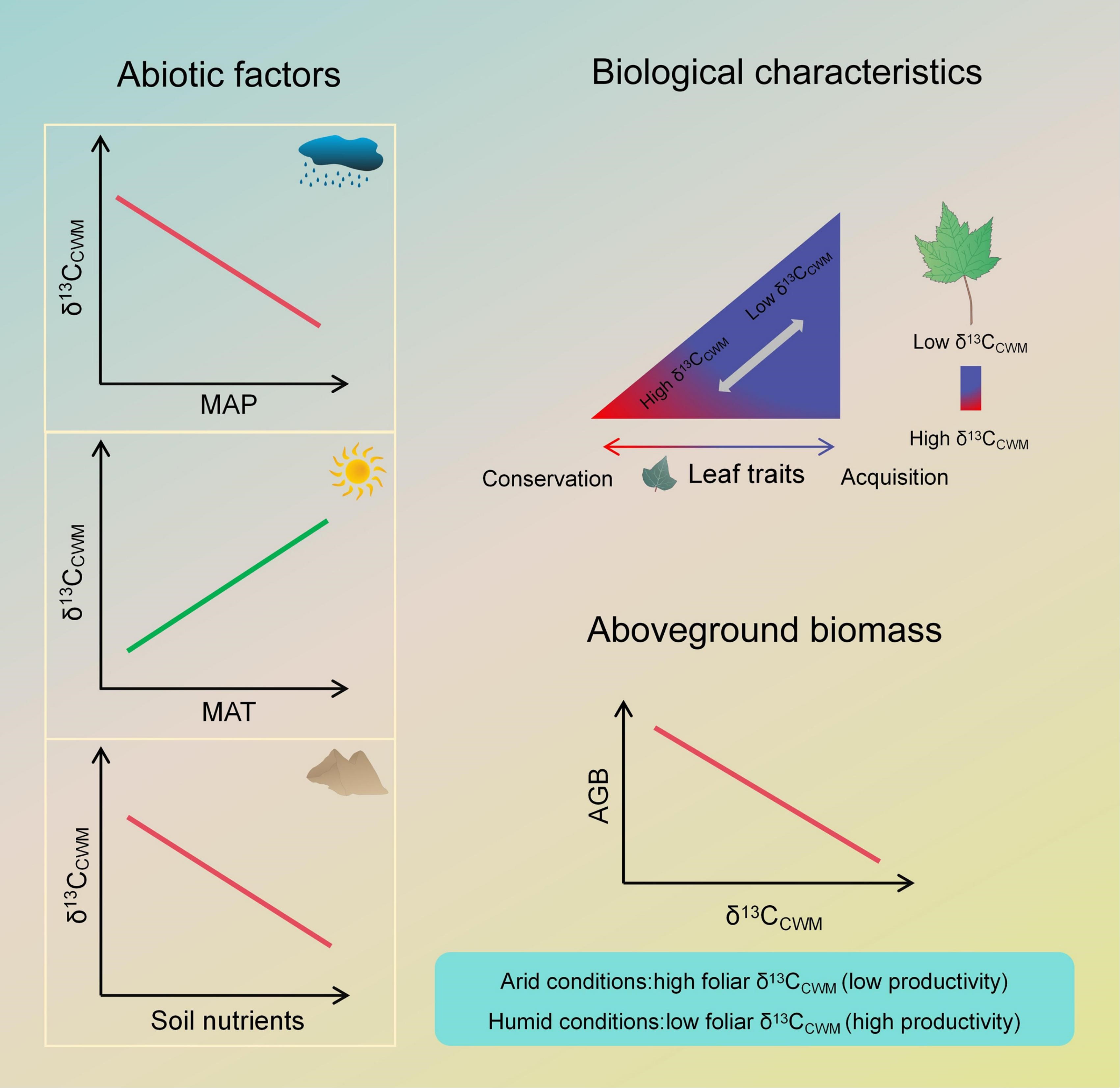
Differences inδ13CCWM among grassland types were compared using one-way ANOVA with post-hoc LSD tests, while relationships with climate, soil, leaf traits, and AGB were analyzed via least squares regression. Structural equation modeling (SEM) was employed to disentangle the regulatory roles of climate, soil, and leaf traits onδ13CCWM and AGB.
Results
Leaf δ13CCWM increased with decreasing precipitation, peaking in desert steppe and reaching the lowest values in meadow steppe.
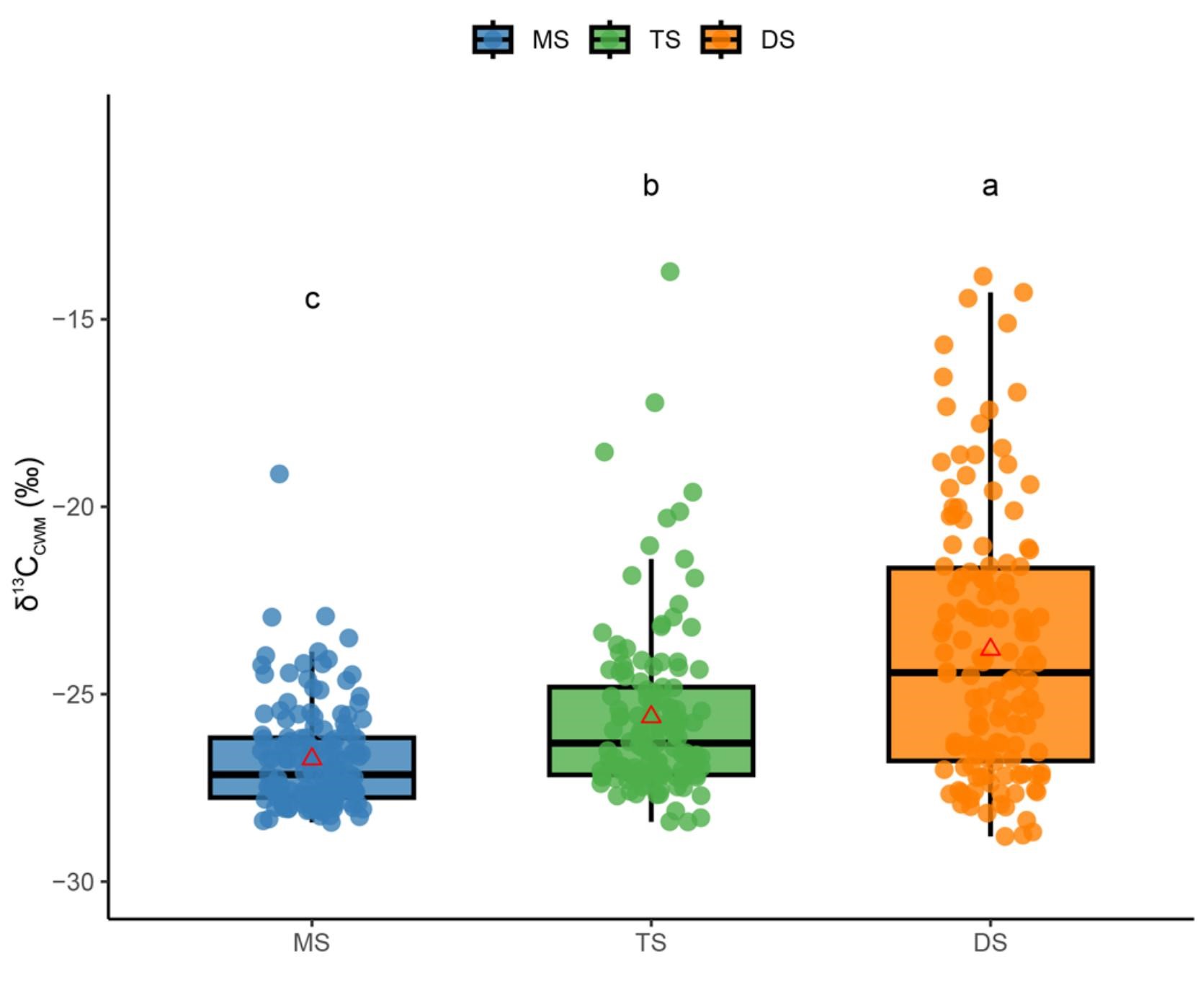
At the regional scale, δ13CCWM showed no significant correlation with mean annual precipitation (MAP) but was positively correlated with mean annual temperature (MAT) in meadow and typical steppes.
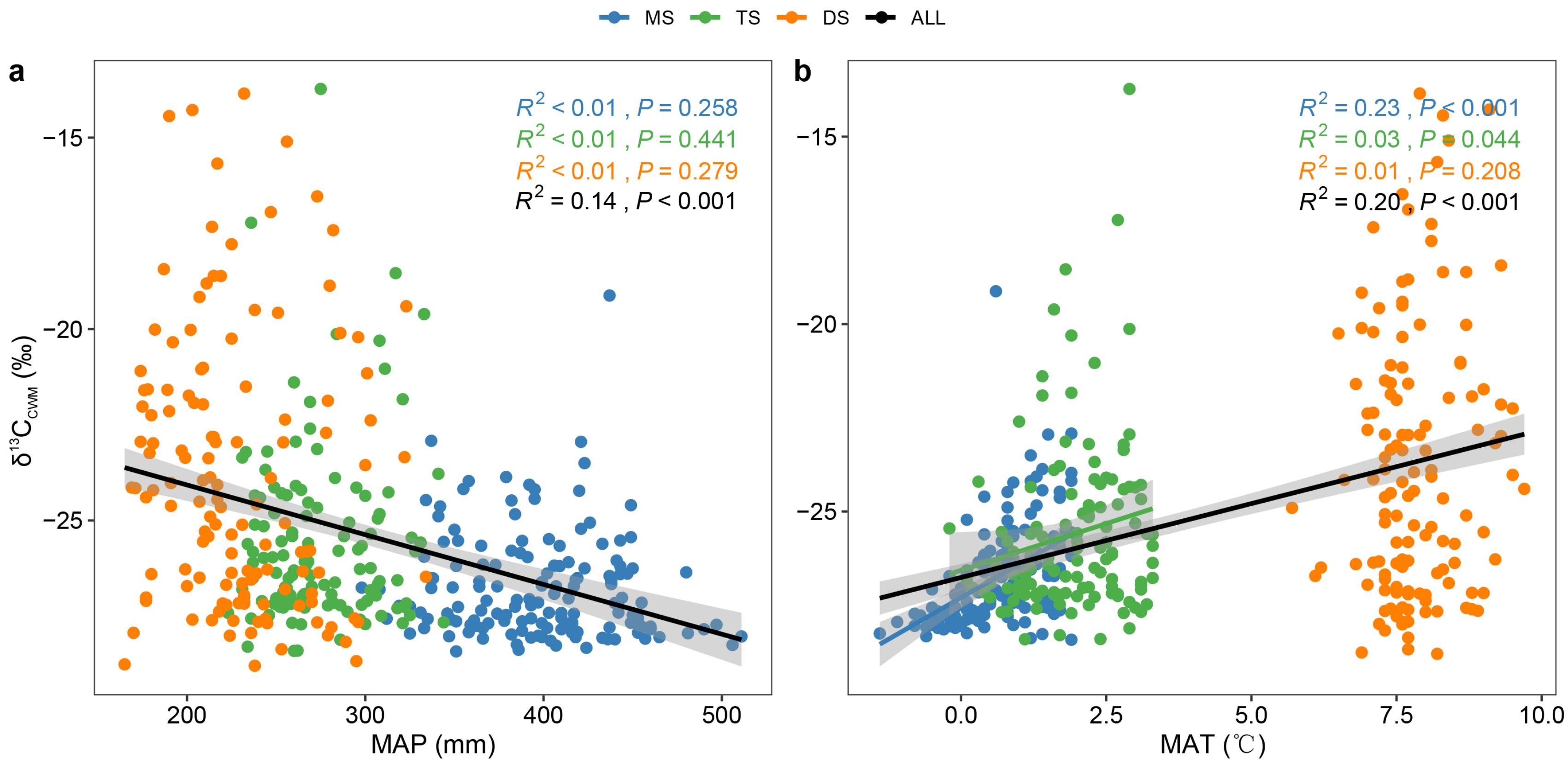
In meadow and typical steppes, δ13CCWM increased with soil pH and bulk density (BD) but decreased with soil total nitrogen (STN) and soil organic carbon (SOC). In contrast, desert steppe δ13CCWM was unaffected by these soil factors.
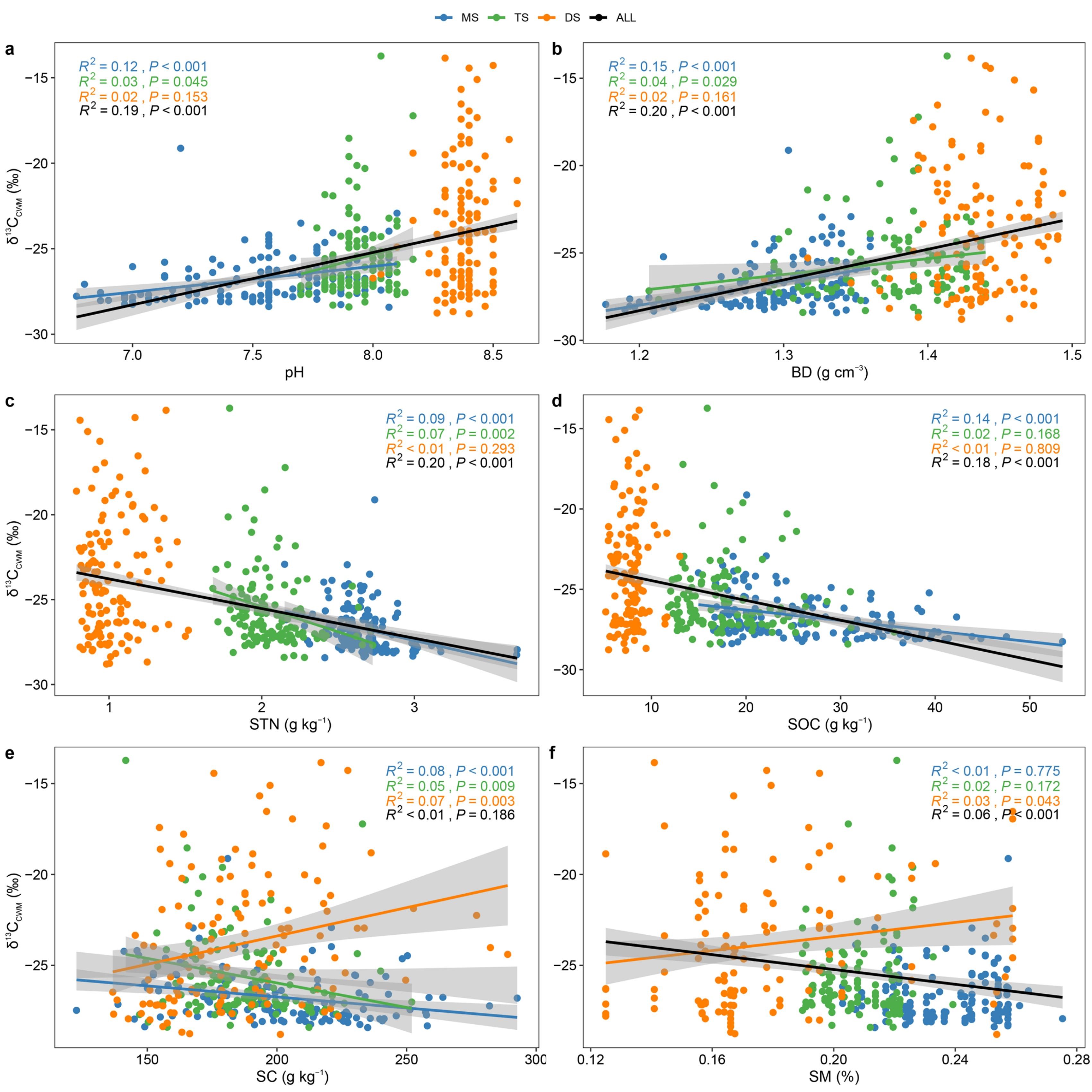
Leaf δ13CCWM was positively correlated with acquisitive traits and negatively correlated with conservative traits.

AGB was negatively correlated with δ13CCWM across all grasslands except desert steppe.
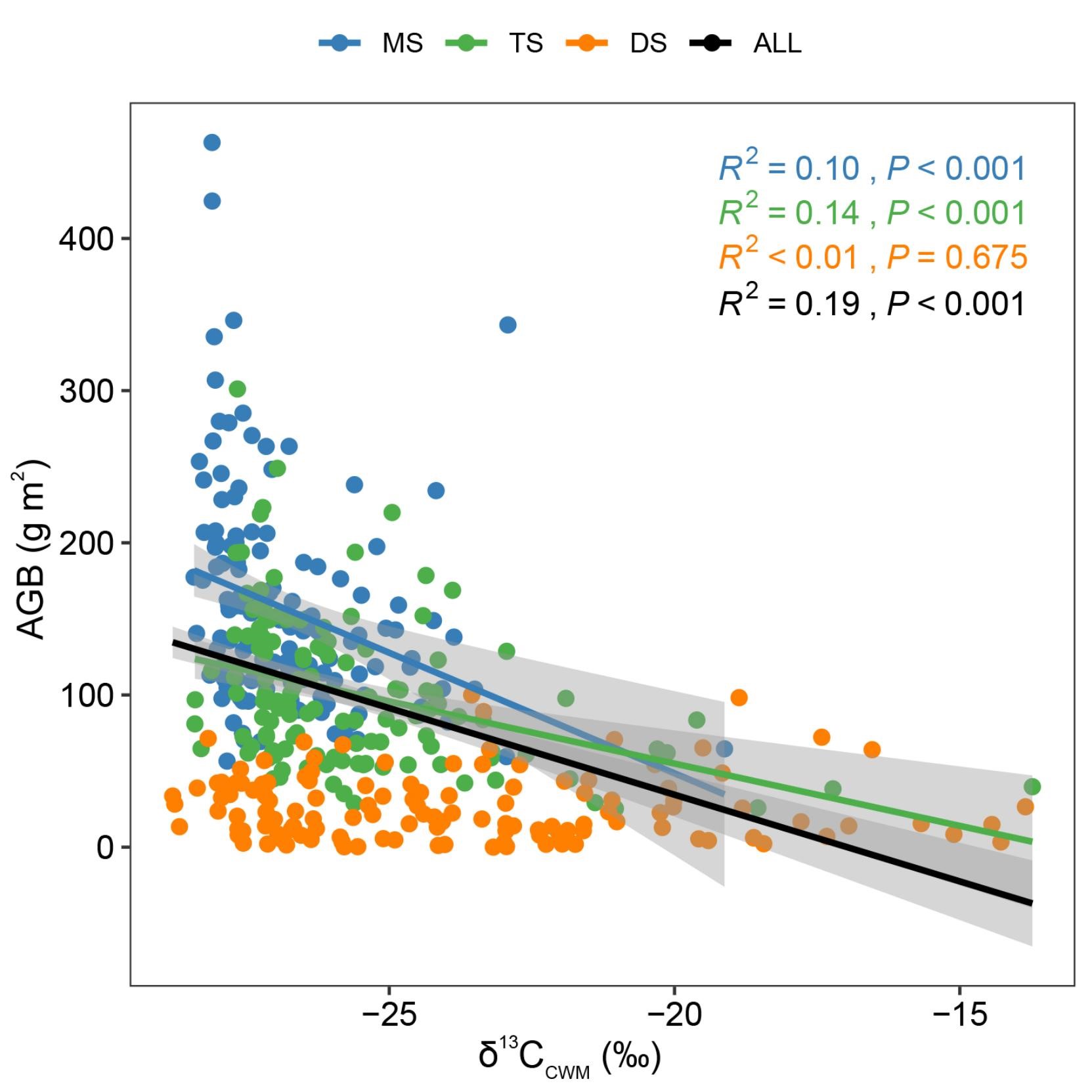
Abiotic factors (climate & soil) dominated δ13CCWM variation in meadow and typical steppes, whereas leaf functional traits outweighed abiotic drivers in desert steppe.
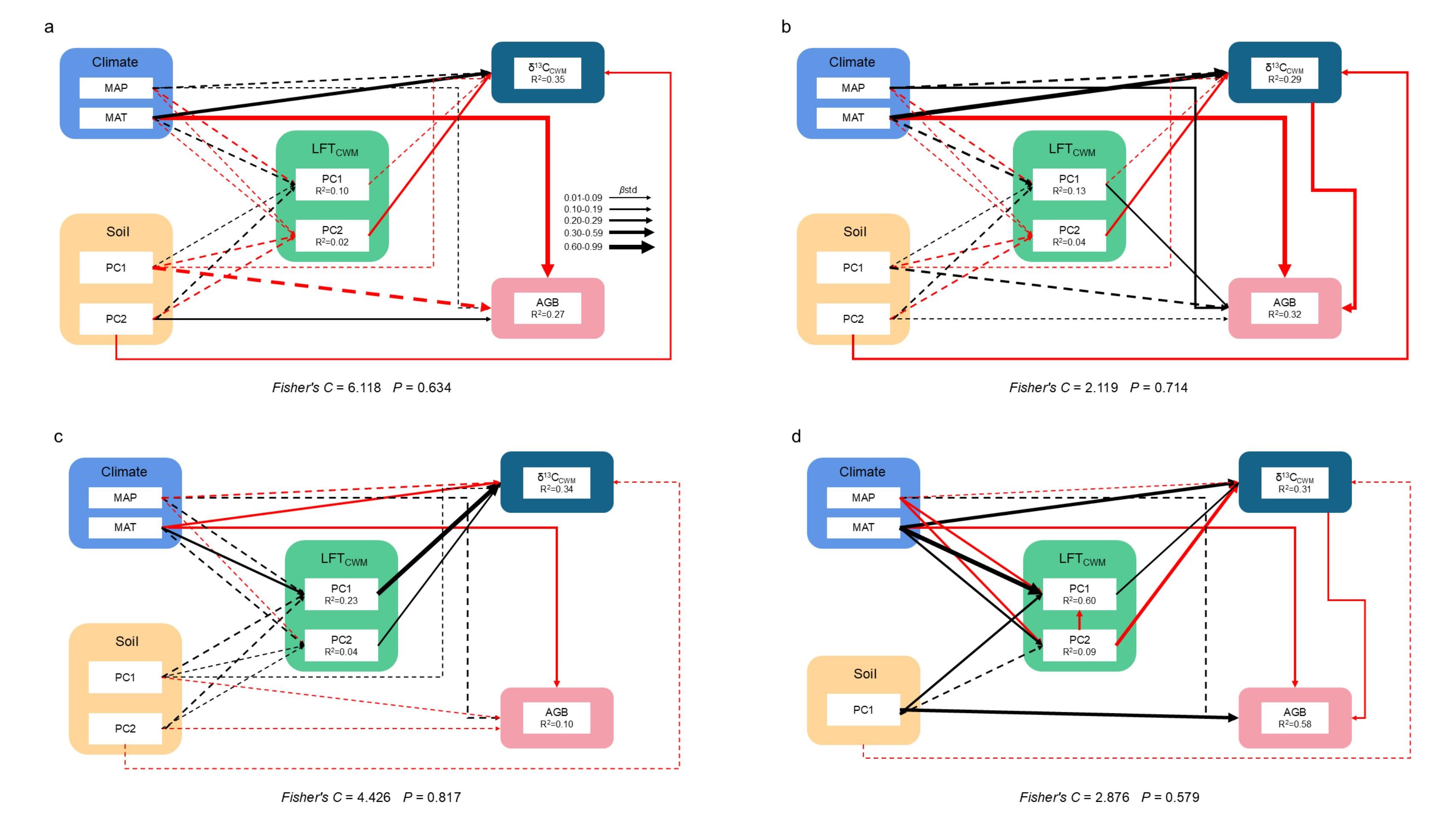
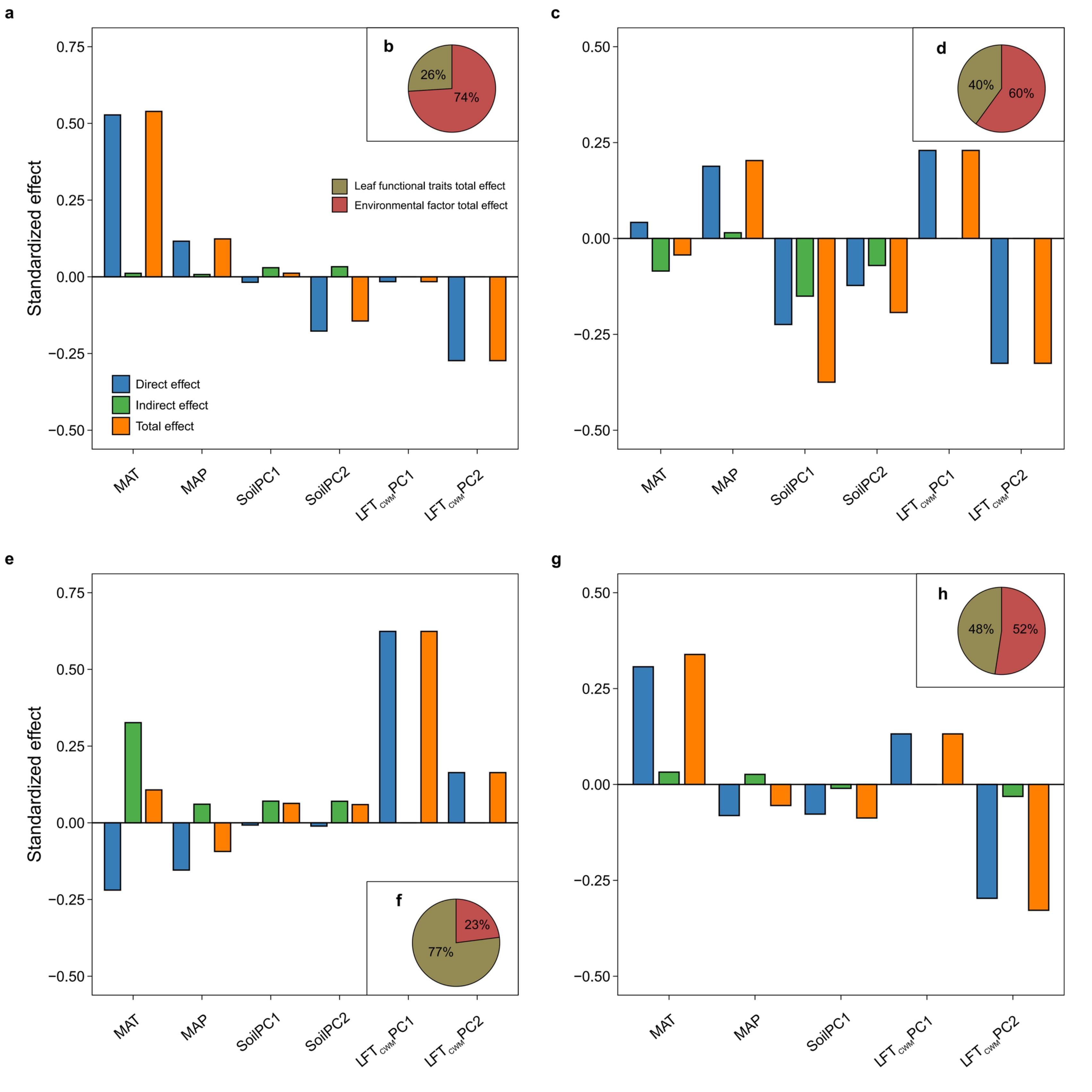
Conclusions
This study reveals divergent drivers of community-level leaf δ13C variation across Inner Mongolian grasslands: environmental factors (climate and soil) primarily regulate δ13C in meadow and typical steppes, whereas leaf functional traits dominate in desert steppe. These findings highlight distinct carbon-water balance mechanisms among grassland types and enhance predictive understanding of ecosystem responses to global change.
Notably, desert steppe plants exhibit low environmental sensitivity in δ13C, relying instead on trait-based drought adaptation—suggesting long-term evolutionary selection for high water-use efficiency (higher δ13C) under persistent aridity. Under future drying climates, high-δ13C species may gain competitive dominance, potentially driving meadow steppe contraction and desert steppe expansion, with profound implications for regional ecosystem functioning and services.
Follow the Topic
-
Communications Earth & Environment

An open access journal from Nature Portfolio that publishes high-quality research, reviews and commentary in the Earth, environmental and planetary sciences.
Related Collections
With Collections, you can get published faster and increase your visibility.
Geology of the Moon
Publishing Model: Hybrid
Deadline: Jan 31, 2026
Drought
Publishing Model: Hybrid
Deadline: Dec 31, 2025




Please sign in or register for FREE
If you are a registered user on Research Communities by Springer Nature, please sign in